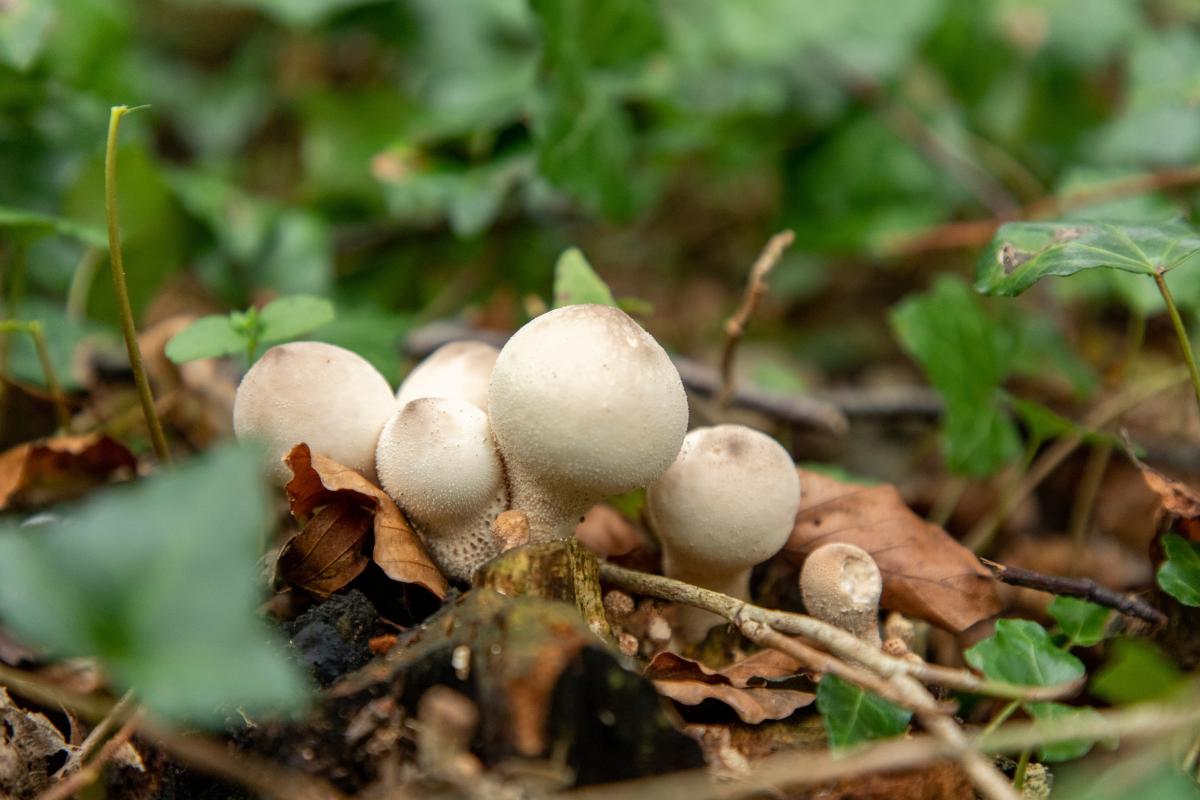
Forest foraging
With more people enjoying the outdoors and interest in the natural world growing, outdoor activities like foraging have gained in popularity. Find out more about foraging, how to get started whilst respecting the environment, and keeping yourself safe.
What is foraging?
Foraging is the act of gathering wild food from the natural world. But not just that, it encourages mindfulness and an awareness of the world around us. Whether you are a foraging novice or a scavenging champion, being out in the wild can be a fantastic way to unwind and relax. In recent years, foraging has become a hobby for many people, but for our ancestors it was a way of life, a means for survival. It is exciting to follow in their footsteps and try to see the world through ancient eyes.
Responsible foraging
It is important to follow good practice, ensuring you do not negatively impact the natural environment and that you keep yourself safe. Here are our top tips for foraging responsibly.
1. Be completely sure of what you are foraging
Never consume a plant or fungi that you cannot confidently identify. As well as foraging courses, there are many identification resources available both online and in books. Always consult a guide if you are unsure. Fungi, in particular, are notoriously hard to identify and should ideally be foraged alongside an expert. Some wild plants and fungi are poisonous, and some are deadly, so it is never worth the risk. Standard practice is to try a small amount first before consuming large quantities to keep risk to a minimum.

2. Wash foraged food
Always wash food properly before consuming and avoid anything that looks unhealthy or discoloured.
3. Forage in safe areas
If foraging along public footpaths or bridleways be wary of foraging low to the ground, as there is a good chance animals such as dogs may have used these areas. It is also good practice not to forage from roadsides as exhaust fumes can taint food growing there.

4. Leave enough for our wildlife
It is important to only forage from plentiful populations and to never strip an area. For foraging to be sustainable, only take what you plan to eat - other foragers may frequent the same areas as you. Most importantly, it is vital to ensure enough food is left behind for wildlife and to allow the plant or fungi you are foraging to reproduce.
5. Avoid damage
Take care to ensure you aren’t causing any damage to other species and habitats whilst foraging. Be sure not to trample, uproot or damage limbs or stems, and stick to woodland paths. If an area seems unreachable, please do not attempt to forage there. There are sure to be a multitude of other areas more suitable nearby.
6. Foraging and the law
All wild plants are protected under the Wildlife and Countryside Act (1981). This means it is against the law to dig up or remove a plant, fungi or lichen without the permission of the landowner or occupier. Always bear this in mind when visiting different areas across the country.
Under Schedule 8, certain species are protected against picking, damage, uprooting and sale. View the list.
Please do not forage rare species - ancient woods in particular often contain rarities. Always consult an identification guide and if you are unsure best practice is to not pick.
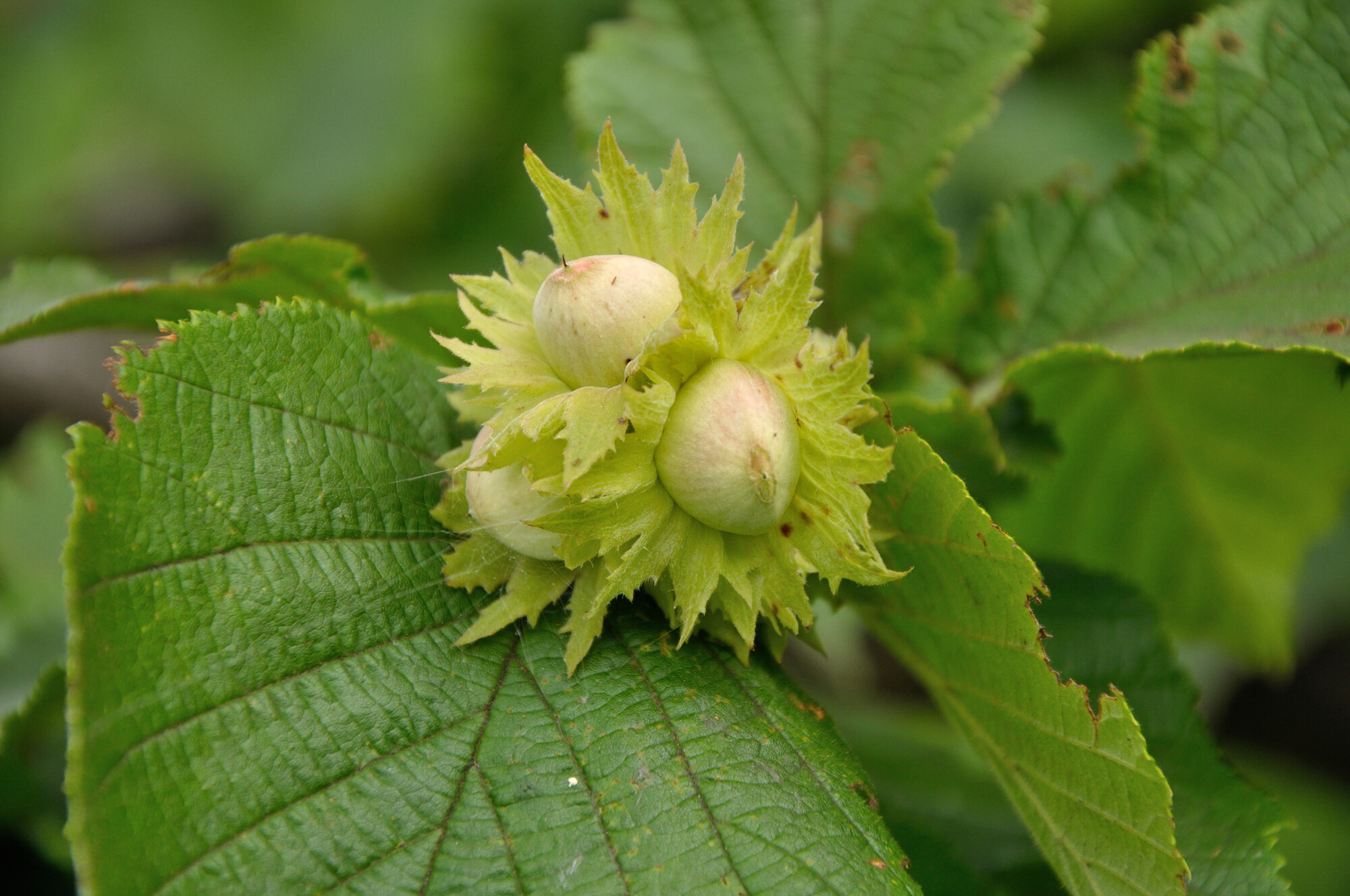
Seeking expert advice
Whilst foraging can be a fun and exciting activity to get you outdoors and enjoying nature, it is important to remember that not everything is safe to consume. If there is ever any doubt please do not eat it and always make sure to wash your hands before touching your face or any other food or drink.
There are plenty of fantastic online resources that can help you to understand what is and isn’t safe to forage. Below are just a few websites which provide informative guides, book recommendations and foraging courses:
- UK Foraging | The Foraging Course Company | United Kingdom
- Foraging for Mushrooms and other Wild Foods in the UK (wildfooduk.com)
- Rogers Mushrooms | Mushroom Pictures & Mushroom Reference
- Foraging Guide - Month by Month - Woodland Trust
Facebook groups are also a great resource for all aspects of foraging, and many exist localised to counties as well as nationalised groups. Please remember to always conduct thorough research before consuming foraged food.
Foods to forage in the Forest
At any time of the year there are different foods to find from fungi to berries, to salad leaves and wildflowers! At the right times of year, the forest can provide a multitude of interesting things to try.
Here are a few easy-to-identify foods that can be found within the Heart of England Forest. But remember, always be 100% sure that what you have foraged is definitely what you think it is and never take risks.
Wild garlic
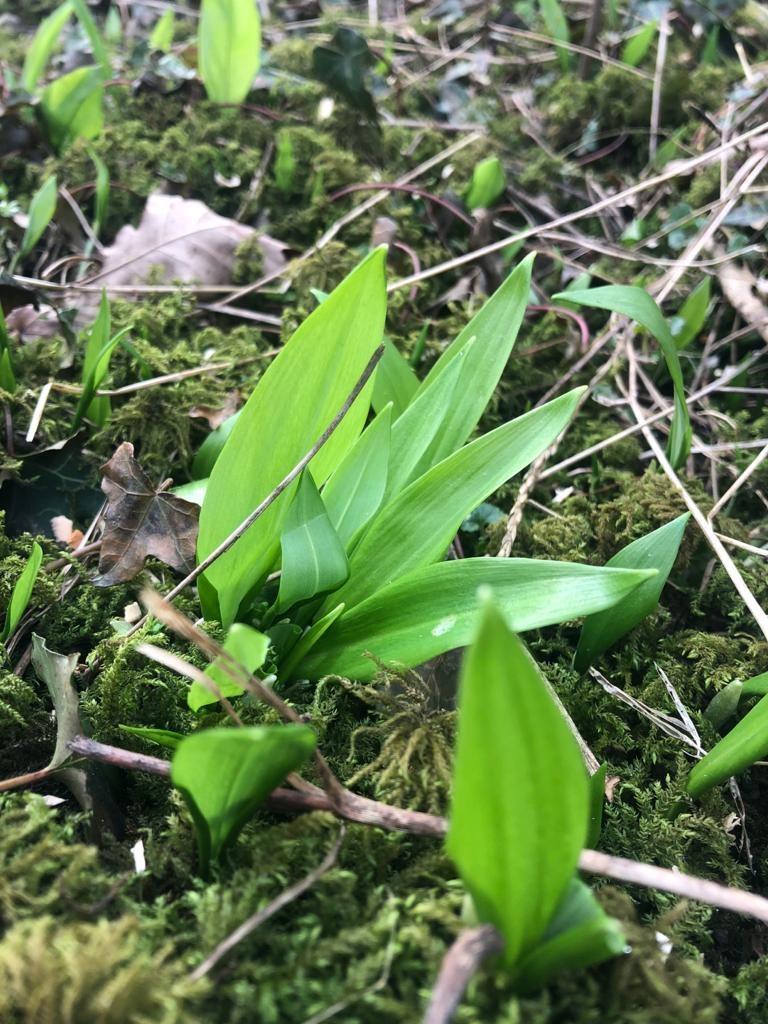
What is wild garlic?
Wild garlic is a perennial bulb and an ancient woodland indicator; it is also a very important early food source for pollinators. It is identifiable by its glossy, green, long, pointed leaves growing from the plant base, and its strong garlic scent. White clusters formed of around 25 six-petalled flowers are held on tall, leafless stalks.
It can sometimes be confused with the toxic lily of the valley which has two-three leaves growing on a stem. The best way to make sure the plant you are foraging is garlic is to look for the leaves growing from the base of the plant.
Where can you find it?
Wild garlic is a common plant found throughout the UK. It is found in deciduous woodlands as it favours chalky soils. Preferring damper conditions, it can also be found in hedgerows and scrub habitat. Wild garlic can often be seen carpeting the woodland floor and filling the Forest air with its wonderful strong scent.
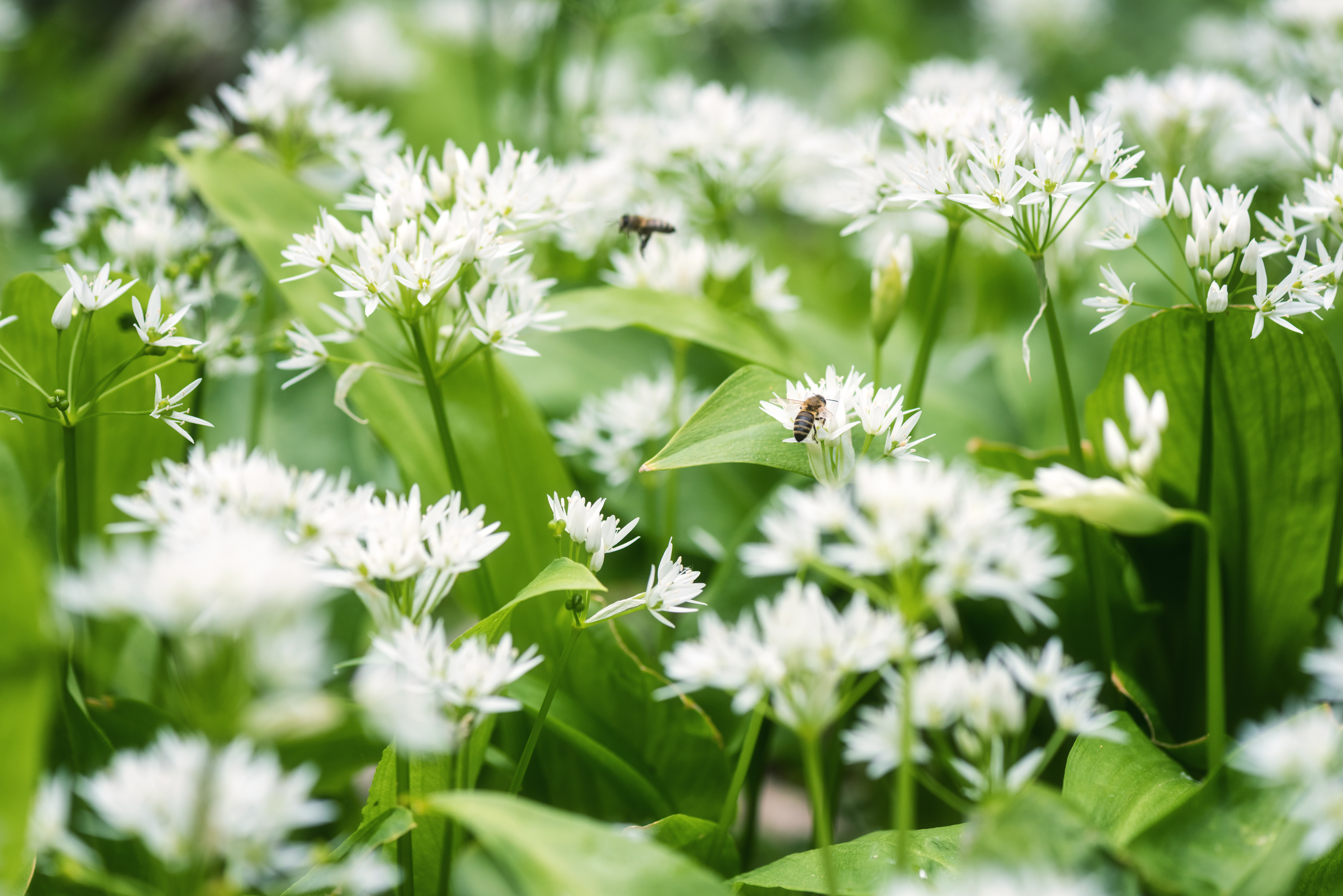
When to forage wild garlic
Wild garlic leaves can first be noticed in late February and its flowers are seen between April and May. The best time to gather wild garlic is before the flowers are in full bloom, ensuring not to take all the leaves from any individual plant and leaving the bulb intact.
How to use your foraged garlic
Wild garlic is versatile and can be used in a lot of recipes as a milder substitute for shop-bought garlic. All parts of the plant are edible however, most commonly, the leaves are foraged. The leaves are often used to make pesto, garlic butter and even to flavour savoury scones. Friend of the Forest Sarah has kindly shared her favourite recipes using wild garlic.
Blackberries

What are blackberries?
Bramble is a rambling plant that produces blackberries through summer and autumn. Bramble flowers, that later develop into rich black-purple blackberries, can be white or pink and have five petals. Its hairy leaves are mostly toothed and formed of 3-5 leaflets. These plants’ thorny, arching stems can put out roots wherever they touch the ground.
Where to find blackberries
Bramble grows in most habitats throughout the UK. However, it is most common within woodland as an understory plant. It is also commonly found in hedgerows, scrub and grassland, preferring acidic soil.
When to forage for blackberries
Bramble is in flower from May time and its fruits can be found through to November. Blackberries should be picked when fully ripened for the best taste. When foraging, always ensure to leave enough berries behind for the wildlife.
How to use foraged blackberries
Blackberries are a very commonly foraged berry and a great starting point for beginners. They can be used to make all sorts of delicious treats including jam, liqueur, crumble, and as a great addition to many other desserts.
Friend of the Forest Jane, has shared one of her favourite recipes using foraged blackberries from the Forest – tasty blackberry oaty slices!
Elder
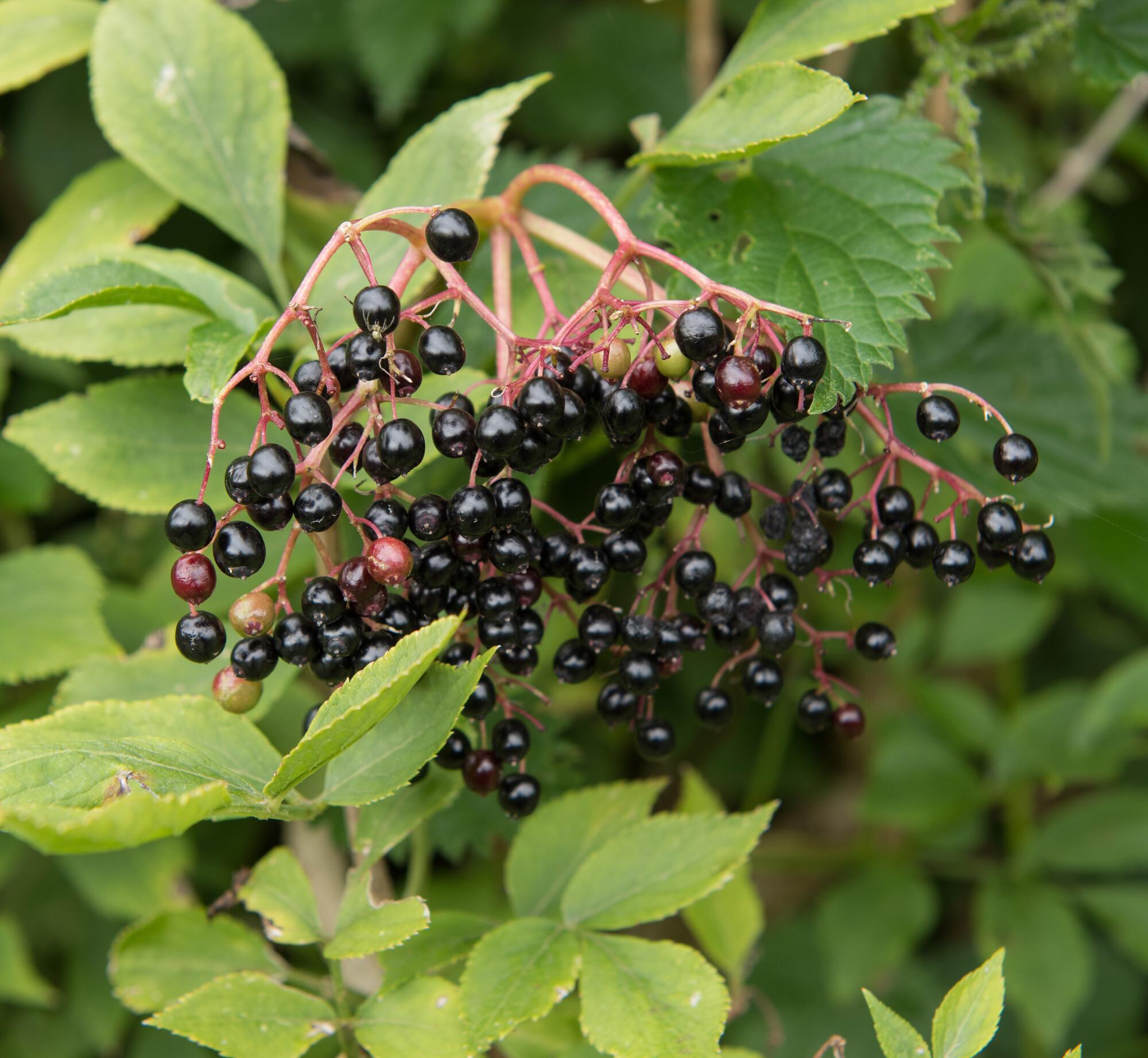
Elder trees, flowers, and berries
Elder trees have pinnate leaves formed of 5-7 pairs of leaflets which have serrated edges. During late spring-early summer, elder trees produce beautifully-scented, large, flat umbels constructed of many white, strongly-scented flowers. By autumn these dainty flowers develop and ripen into bunches of small, sour berries which are purple-black in colour.
Where to find elder
Elder is a common hedgerow tree in the UK - they can be found in woodland, scrub and wasteland habitats. They can often be found near badger setts, rabbit warrens, and beneath bird nests or perches as the animals distribute the seed through their droppings.
Foraging for elder
Elderflowers can be spotted in late spring-early summer. The best time to forage the flowers is on a dry, sunny day in early June. Berries ripen in late summer-early autumn and should be foraged when fully ripened or whilst still green.
How to eat foraged elder
Once processed (cooked, pickled, or fermented), both elderflowers and elderberries are edible and can be used in different ways. Most commonly, elderflowers are used to make cordial, syrups, fritters and even champagne. The berries, while green, can be transformed into elderberry capers and, when ripened to a rich purple-black colour, used for jams, liqueurs, wine and syrups.
Forest spotter's guides
The Forest is full of things to see. There are more than 30 species of broadleaf trees and shrubs, a wide variety of wildflowers, fungi, berries, birds and much more. Use our handy spotter's guides to make the most of your Forest visits.



